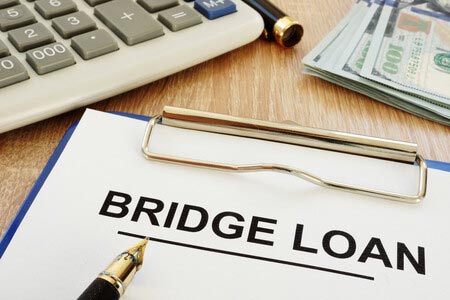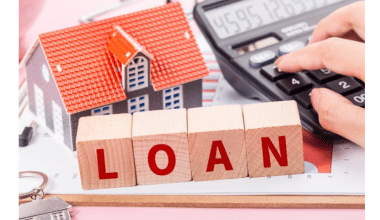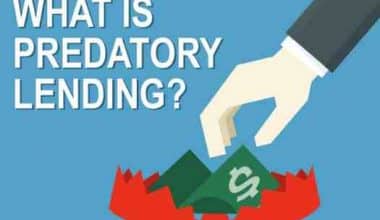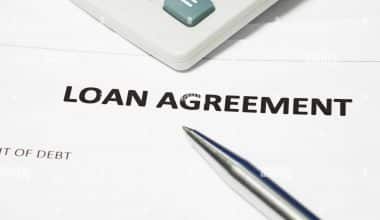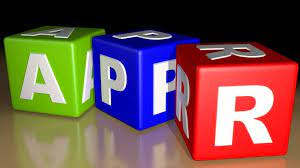A bridge loan is a short-term loan taken out specifically for the purpose of funding a mortgage down payment. Simply put, if you want to make an offer on a new house before selling your current one but you need some extra cash, a bridge loan can help you out. But the question is, “Is this a right choice for you?” Plus how exactly does a bridge loan work?
We will walk you through the ins and outs of bridge loans so you can decide if they are right for your home purchase.
What Exactly Is a Bridge Loan?
A bridge loan is a type of short-term financing that allows individuals and businesses to borrow funds for up to a year. Bridge loans, also known as bridging loans, interim financing, gap financing, and swing loans, are secured by collateral such as the borrower’s home or other assets. Bridge loans have interest rates ranging from 8.5% to 10.5%, making them more expensive than traditional, long-term financing options.
On the other hand, bridge loans, have a faster application and underwriting process than traditional loans. Furthermore, if you can get a mortgage to buy a new home, you can probably get a bridge loan, assuming you have the required equity in your first home. Bridge loans are therefore a popular option for homeowners who need quick access to funds to buy a new home before selling their current one.
How Does Bridge Lending Work?
When a homeowner decides to sell their current home and buy a new one, it can be difficult to obtain a contract to sell the home and then close on a new one within the same time frame. Furthermore, a homeowner may be unable to make a down payment on a second home until the proceeds from the sale of their first home are received. In this case, the homeowner can use their current home as collateral for a bridge loan to cover the down payment on their new home.
In this case, a homeowner can work with their current mortgage lender to obtain a six- to twelve-month loan to “bridge the gap” between the new purchase and the sale of their old home. Bridge loans are not offered by all traditional mortgage lenders, but they are more commonly offered by online lenders. Although bridge loans are secured by the borrower’s home, because of the short loan term, they frequently have higher interest rates than other financing options, such as home equity lines of credit.
When the borrower’s first home is sold, the proceeds can be used to pay off the bridge loan, leaving them with only the mortgage on their new home. If the borrower’s home does not sell within the loan term, they will be responsible for making payments on their first mortgage, their new home’s mortgage, and the bridge loan. Bridge loans are thus a risky option for homeowners who are unlikely to sell their home in a short period of time.
A Bridge Loan Example
In order to purchase the Sony Building in New York City in 2016, Olayan America Corp. obtained a bridge loan from ING Capital. The short-term loan was approved quickly, allowing Olayan to close on the Sony Building quickly. The loan assisted in covering a portion of the cost of purchasing the building until Olayan was able to secure more permanent, long-term funding.
Traditional Loans vs. Bridge Loans
Bridge loans are typically easier to apply for, approve, and fund than traditional loans. However, in exchange for the convenience, these loans typically have short terms, high interest rates, and high origination fees.
Borrowers generally accept these terms because they require quick and easy access to funds. They are willing to pay high interest rates because they understand the loan is for a short period of time and intend to repay it quickly with low-interest, long-term financing. Furthermore, most bridge loans have no repayment penalties.
Types of Bridge Loan
Bridge loans are classified into four types: open bridging loans, closed bridging loans, first charge bridging loans, and second charge bridging loans.
#1. Closed Bridging Loan
A closed bridging loan is available for a predetermined time period agreed upon by both parties. Lenders are more likely to accept it because it provides them with greater certainty about loan repayment. It has lower interest rates than a traditional bridging loan.
#2. Open Bridge Loan
The repayment method for an open bridge loan is unknown at the outset, and there is no set payoff date. Most bridging companies deduct the loan interest from the loan advance to ensure the security of their funds. Borrowers who are unsure when their expected finance will be available prefer an open bridging loan. Because loan repayment is uncertain, lenders charge a higher interest rate for this type of bridging loan.
#3. First Charge Bridging Loan
The lender receives first charge over the property with a first charge bridging loan. If there is a default, the first charge bridge loan lender will be paid first, followed by other lenders. Because of the low level of underwriting risk, the loan attracts lower interest rates than second charge bridging loans.
#4. Second Charge Bridging Loan
The lender takes the second charge after the existing first charge lender for a second charge bridging loan. These loans are typically for a short period of time, less than a year. They are more likely to default and thus attract a higher interest rate. After all liabilities owed to the first charge bridging loan lender have been paid, a second charge loan lender will begin recouping payments from the client. The bridging lender for a second charge loan, on the other hand, has the same repossession rights as the first charge lender.
Benefits of Bridge Loans
One of the benefits of bridge loans is that they allow you to capitalize on opportunities that you would otherwise pass up. A homeowner looking to buy a new house may include a clause in the contract stating that he or she will only purchase the house after selling their current one. Some sellers, however, may be uncomfortable with such an agreement and may end up selling the property to other ready buyers. You can use a bridge loan to make a down payment on a house while you wait for the sale of the other house to be completed.
A bridge loan also takes less time to qualify for and be approved for than a traditional loan. The quick processing of a bridge loan allows you to buy a new home while waiting for the best offer on the old one. Because of the lengthy waiting period for traditional loans, you may be forced to rent an apartment, which may have an impact on your budget. Furthermore, depending on the loan agreements, bridge loans allow for flexible payment terms. You have the option of beginning loan repayment before or after obtaining long-term financing or selling the old property.
Drawbacks Bridge Loan
Taking out a bridge loan means you’ll have to pay two mortgages plus a bridge loan while you wait for the sale of your old house or long-term financing to close. If you fail to meet your loan obligations, the bridge loan lender may foreclose on your home, leaving you in even more financial trouble than you were before you took out the bridge loan. Furthermore, the foreclosure may result in you losing your home.
Bridge loans are expensive as a short-term form of financing because of the high interest rates and associated fees such as valuation payments, front-end charges, and lender legal fees. Furthermore, some lenders require you to take out a mortgage with them, limiting your ability to compare mortgage rates across different firms.
Common Home Bridge Loan Interest Rates
Bridge loan interest rates are generally higher than conventional loan interest rates, with charges ranging up to 2% above prime rate. Bridge loans, like traditional mortgages, have closing costs (which can range from a few thousand dollars to a certain percentage of the loan’s value) and origination fees. You might be required to pay for an appraisal as well.
However, because buyer protections are frequently limited in the event that the sale of their current home falls through, it’s critical to read the terms and conditions associated with any bridge loan offer. Because bridge loans are secured by your existing property, they can be foreclosed on by a lender if payments are not made on time. Keeping this in mind, you should carefully consider how long you can go without financial relief if a sale falls through, and avoid overextending yourself on any amounts borrowed. Similarly, you’ll discover that extensive research into the current real estate market and how long homes take to sell in your area pays off.
When Should You Use a Bridge Loan?
Bridge loans are most commonly used when a homeowner wishes to purchase a new home before selling their existing one. A borrower can use a portion of their bridge loan to pay off their current mortgage while the remainder is used to make a down payment on a new home. Similarly, a bridge loan can be used as a second mortgage to cover the down payment on a new home.
A bridge loan could be beneficial if you:
- Have decided on a new home and live in a seller’s market where houses sell quickly.
- You want to buy a house, but the seller will not accept an offer contingent on the sale of your current home.
- Can’t afford a down payment on a new home without first selling your old one
- Want to buy a new house before selling your old one.
- Planning to sell your current home before closing on the new one.
Businesses can also use bridge loans to capitalize on immediate real estate opportunities or to fund short-term expenses. These loans are typically available to businesses through hard money lenders, who finance loans using your property as collateral, and online alternative lenders. The interest rates on these loans are higher than those on other types of business loans.
Business bridge loans are commonly used for the following purposes:
- Covering operating costs while a company seeks long-term financing
- Obtaining the funds required to purchase real estate quickly
- Using limited-time offers on inventory and other business resources
Costs of a Bridge Loan
If you want to buy a new house or other real estate but haven’t sold your current property, bridge loans are a convenient way to obtain temporary financing. This type of financing, however, is typically more expensive than a traditional mortgage. Bridge loan interest rates vary depending on your creditworthiness and loan size, but they typically range from the prime rate (currently 3.25%) to 8.5% or 10.5%. Business bridge loan interest rates are even higher, typically ranging from 15% to 24%.
Borrowers must pay closing costs as well as additional legal and administrative fees in addition to the bridge loan interest. Bridge loan closing costs and fees typically range from 1.5% to 3% of the total loan amount and may include:
- Appraisal Fee
- Administration Fee
- Escrow Fee
- The cost of title insurance
- Notary commission
- Loan Origination Fee
Alternatives for Bridge Loans
Of course, if you need a quick windfall, you don’t always need to look for a bridge loan. After all, many other types of alternative real estate financing can help you make ends meet here, even if you’re in a pinch. Let us look at some examples.
#1. Home Equity Loans
Bridge loans are frequently replaced by home equity loans. You can borrow against current equity in your home using this type of financing, which is secured by your current home as collateral. Home equity loans are typically long-term in nature (up to 20 years) and offer interest rates that are competitive with bridge loans. While it is often less expensive than a bridge loan, keep in mind that obtaining a home equity loan will still require you to carry two mortgages, if not three, if you purchase a new home and fail to sell your old one in a timely manner.
#2. HELOC (Home Equity Line of Credit)
A home equity line of credit (HELOC) is essentially a second mortgage that provides a lower interest rate, lower closing costs, and more time to repay borrowed funds. You can also use any HELOC funds to make home improvements and other improvements. It should be noted that some HELOCs may have prepayment penalties. Rocket Mortgage does not provide home equity loans.
#3. 80-10-10 Loan
An 80-10-10 loan allows you to buy a new home with less than a 20% down payment while also avoiding extra fees due to private mortgage insurance (PMI). An 80-10-10 loan requires you to put down 10% and then obtain two mortgages: one for 80% of the asking price of the new home and another for the remaining 10%. After selling your current home and paying off any outstanding balances, you can use the proceeds to pay off the 10% second mortgage on the new property. Rocket Mortgage does not currently provide this type of financing.
#4. Personal Loan
Finally, if you have a good credit history, stable employment, a track record of timely expense payment, and a low debt-to-income ratio, you should consider applying for a personal loan. This type of loan is frequently secured by personal assets, with terms and conditions that vary depending on the lender.
Steps to Obtaining a Bridge Loan
Examine your home equity
In most cases, you’ll need at least 20% equity to get a bridge loan, but much more if you need extra cash for a down payment on a new home. Keep in mind that if your home sells for less than you anticipated, you may have to pay off the bridge loan balance in cash.
Keep an eye on your debt-to-income (DTI) ratio
You’ll need to qualify with both your current and prospective mortgage payments. Consider a bridge loan if your income fluctuates due to commissions or self-employment — a few slow months could quickly deplete your savings if you’re making three mortgage payments.
Improve your credit score
Bridge lenders want to see that you’ve handled your debt responsibly because they expect you to make multiple mortgage payments. Although some bridge loan programs allow credit scores as low as 600, having a high credit score will get you the best rates.
Locate a bridge loan provider
Bridge loans are a niche product that not all lenders provide. Inquire with the lender you’re working with for the new home purchase about bridge loans. If it does not, consider the following alternatives:
- Banks and credit unions in the community. If you already bank locally, inquire about bridge loans. Even if you don’t bank with them, local banks and credit unions provide personalized service and are knowledgeable about the local real estate market.
- Non-QM lenders. Non-qualified mortgage (non-QM) lenders focus on alternative mortgage products such as bridge loans. Non-QM loans have features that qualified mortgages do not, such as interest-only and balloon payment structures.
- Hard Money Lenders. Individuals or groups of investors who offer loans with short repayment terms, such as bridge loans, are referred to as hard-money lenders. They typically have higher interest rates, but their credit requirements may be less stringent. Before working with a lender, make sure they are reputable.
Have a backup plan for paying off bridge loans
Obtaining a bridge loan can be risky if home values begin to fall, so make sure you have the assets to repay it if you are unable to sell your home. If you do not or cannot pay off your mortgage within 12 months, you may lose your home to foreclosure.
Conclusion
A bridge loan can be useful in certain situations, such as when you need to buy a new home before your old one sells. However, while a bridge loan can get you out of a jam or help you get a much-needed new property in a hot market faster, it can also make a costly acquisition more difficult to obtain.
If you get one, you’ll almost certainly have more money to spend on real estate. However, you will increase your overall debt load and may end up paying off multiple loans at the same time if your current home does not sell quickly. As always, if you can manage it, the best strategy is to wait to sell your old house before purchasing a new one.
Related Articles
- CISCO LOGO: Its Meaning, Historical Changes and Designer
- How Cisco Brand Positioning Is Making Them Stronger
- SBA EXPRESS LOAN: Online Application, Programs, Requirements for any Business
